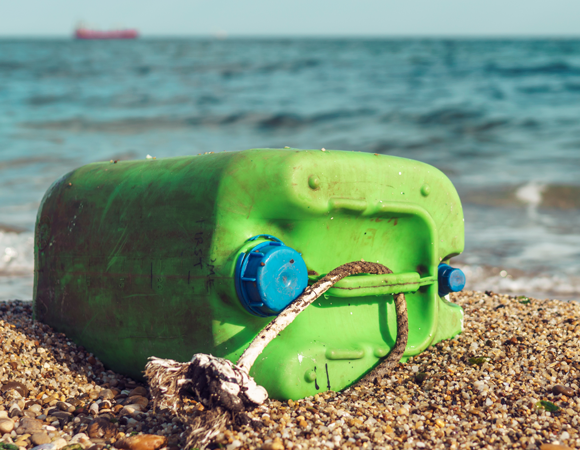Discarded plastics don’t just pollute the environment directly – new research shows that they also contribute to global greenhouse gas emissions
Greenhouse gas emissions are a very serious environmental problem that drives global climate changes. New research reveals an additional, unexpected source of greenhouse gas emissions: It turns out that in addition to plastics’ other polluting effects, they also emit greenhouse gases as they break down in the environment after being discarded.
Plastic is the all-encompassing term for synthetic polymers manufactured from crude oil. Because of its numerous uses, the global rate of plastic manufacturing is rising, along with environmental pollution. Discarded plastic will remain in the environment for hundreds of years or more, because living organisms—animals, fungi, and bacteria—do not degrade it significantly. Beyond the aesthetic aspect, the resulting environmental impact is far and wide, including deleterious effects on living creatures and the release of pollutants.
A new study, published in the scientific journal PLOS One, found that plastic is a source of greenhouse gas emissions, which contribute to the greenhouse effect and to global warming. The researchers examined six commonly used types of plastics and found they all release the greenhouse gases methane (CH4) and ethylene (H2C4) when exposed to sunlight. Of the six plastic types, low-density polyethylene was found to produce the largest amounts of greenhouse gases. That is an alarming fact, as low-density polyethylene is used for the production of single-use products, such as plastic bags, wrappings, and cling films, which have a quick turnaround to disposal. Even aged polyethylene collected from the ocean continued to emit greenhouse gases at a significant rate.
Over 212 days, the researchers measured the gas emissions from plastics exposed to natural sunlight, and found that they rose consistently over the period. Moreover, plastic that was first exposed to light and later placed in the dark continued to emit greenhouse gases. The researchers attribute this finding to the breakdown of plastic caused by exposure to sunlight and claimed that once the plastic begins to disintegrate, its gas emissions become significant.

Today, the marine environment is already rich in tiny, polluting plastic particles. Plastic waste on the seashore | Photograph: Shutterstock
To simulate different breakdown conditions, the researchers examined the gas emission rate from different forms of plastics—powder, pellets, and flakes. They found that the smaller the fragment and larger its surface area, the higher its gas emission rate. Degradation processes result in the fragmentation of the plastics into gradually smaller units, so as long as they persist in the environment, their gas emissions will rise over time. Today, micro-plastics (tiny particles of plastic) are already abundant in the marine environment, with destructive ecological effects. The research shows that those are further compounded by a contribution to global climate change.
Plastic waste is also found in vast quantities on land—in beaches, landfills, and almost everywhere else. The researchers showed that plastic exposed to air emits up to 80 times more greenhouse gases than plastic in water. While greenhouse gas emissions from plastics are relatively low, as compared to other sources, such as fossil fuels; because of the enormous quantities of plastic in the environment, it could become a very significant source for those gases. The researchers are now trying to calculate the actual contribution made by plastics to the greenhouse effect and global warming.
Worldwide, plastic manufacturing is accelerating, as is the rate at which it accumulates in the environment. Its contribution to the greenhouse effect is only one of the environmental problems associated with it. While there is no longer any doubt that significantly reducing global plastic manufacturing is vital—especially the production of single-use plastics—this may prove to be no simple task.
